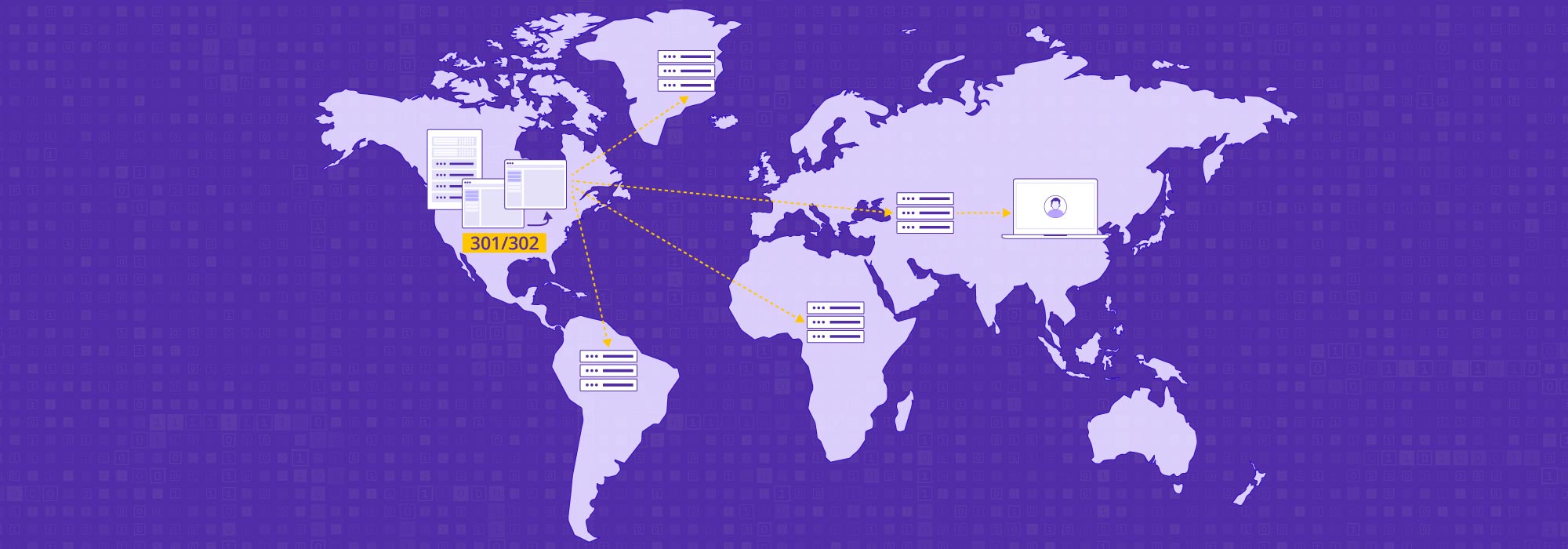기술로서의 라이브 비디오 스트리밍이 지난 몇 년 동안 급속도로 폭발적으로 사용되었다고 말하는 것은 절제된 표현일 것입니다. 고품질 비디오 스트리밍은 다음과 같은 일상적인 활동에 많이 사용되었습니다.
- 동시 사용자에게 라이브 스트리밍 비디오 콘텐츠가 있는 게임
- 고품질 주문형 비디오(VOD)를 스트리밍하는 플랫폼
- 실시간 온라인 화상 채팅을 지원하는 앱
- 뉴스 아울렛, 스포츠 및 라이브 이벤트 라이브로 발표하는 방송인
- HLS(HTTP 라이브 스트리밍)로 구동되는 YouTube와 같은 라이브 비디오 Q&A
실제로 스트리밍 도구 제공업체인 StreamElements와 통계 추적기 Arsenal.gg의 보고서에 따르면 라이브 스트리밍 산업은 2019년에 무려 12% 성장했습니다.. Facebook Gaming은 시청 시간이 210% 증가하여 이러한 성장의 상당 부분을 차지했습니다. 게이머를 위한 라이브 스트리밍 플랫폼인 Twitch는 2018년 12월 이후 시청 시간이 3% 증가했습니다.
라이브 스트리밍 비디오의 이러한 붐은 콘텐츠 전송 네트워크(CDN) 및 CDN 공급자의 성장으로 가능해졌습니다. 이 기술을 통해 온라인 비디오 스트림을 짧은 대기 시간과 실시간으로 전 세계 사용자에게 전달할 수 있습니다.
CDN이란 무엇입니까?
콘텐츠 전송 네트워크(CDN)는 전 세계에 분산된 서버 및 해당 데이터 센터의 네트워크 원활하고 일관된 사용자 경험을 위해 최소한의 대기 시간으로 고품질 콘텐츠를 제공하기 위한 것입니다. ㅏ CDN은 콘텐츠를 최종 사용자에게 더 가까이 제공합니다. PoP(Points of Presence)라고 하는 전략적으로 위치한 데이터 센터를 통해.
다양한 유형의 CDN
사용하는 CDN 유형은 전문화된 특정 서비스에 따라 다를 수 있습니다. 일반적으로 CDN은 P2P(Peer-to-Peer) 또는 Private CDN일 수 있습니다.
P2P 또는 P2P 네트워크 CDN
P2P 네트워크 CDN에는 서버가 파일을 다운로드할 수 있도록 개방된 개별 시스템이 포함됩니다. 이를 가능하게 하는 서버를 트래커라고 하지만 소규모 서버 네트워크일 수도 있습니다. 사용자가 다운로드할 특정 파일을 찾는 BitTorrent와 같은 일반적인 파일 공유 플랫폼을 생각해 보십시오. 단일 서버에서 다운로드하는 대신 추적기는 동일한 파일이 포함된 여러 컴퓨터를 검색하고 각 시스템에서 파일의 다른 부분을 다운로드합니다. 이러한 방식으로 P2P CDN은 본질적으로 매우 분산되어 있지만 이러한 유형의 모델과 관련된 보안 위험이 있을 수 있습니다.
비공개 또는 피어링 모델 CDN
개인 또는 피어링 유형의 CDN은 회사가 네트워크를 소유하고 적용 범위 전체에 걸쳐 서버를 유지 관리하는 CDN입니다. 분산형 모델에 의존하는 대신 피어링/사설 CDN은 웹사이트 콘텐츠를 보관하는 서버를 제어합니다. 방문자가 웹 사이트를 방문하면 물리적으로 가장 가까운 서버에서 파일이 다운로드됩니다.
CDN을 분류하는 또 다른 방법은 푸시인지 원래 풀인지에 따라 결정됩니다.
푸시 CDN
사용자 또는 기본 서버가 콘텐츠를 CDN에 푸시하는 CDN입니다. 기본적으로 사용자가 콘텐츠를 CDN에 직접 업로드하는 보조 서버처럼 작동합니다. 사용자는 업로드할 콘텐츠와 업데이트 또는 만료 시기를 지정할 수 있습니다. 이 유형의 CDN은 변경 사항이 있을 때만 업로드가 발생해야 하므로 트래픽과 사용 방법을 제어하려는 경우에 유용합니다.
오리진 풀 CDN
오리진 풀 CDN에서 사용자는 파일을 CDN으로 푸시하지 않고 대신 그 반대가 발생합니다. CDN은 다음에서 콘텐츠를 가져옵니다. 원본 서버 최종 사용자에게 전달하기 전에 소유자가 저장합니다. 푸시 CDN과 비교할 때 원본 풀 CDN은 특히 변경 전에 파일을 다시 쿼리할 때 트래픽에 약간의 중복이 있을 수 있으므로 속도가 느리고 유연성이 떨어집니다. 원본 풀 CDN을 사용하면 설정이 더 쉽고 저장 공간이 최소화된다는 이점이 있습니다.
라이브 스트리밍이란 무엇입니까?
라이브 스트리밍은 고품질 비디오, 오디오 및 기타 미디어 형식의 데이터가 생성될 때 실시간으로 인터넷을 통해 제작자에서 사용자에게 전송되는 프로세스입니다. 대용량 동영상 파일을 다운로드해 재생하는 대신, 라이브 스트리밍은 사용자가 원거리에서 한 번에 조금씩 파일을 다운로드해 실시간으로 재생할 수 있다.
기본적으로 라이브 스트리밍은 실시간으로 온라인 비디오를 만들고 공유하고 시청할 수 있는 기술입니다. 노트북, 전화, 태블릿 또는 라이브 스트리밍을 허용하는 웹사이트나 앱과 같은 연결된 장치를 사용하여 인터넷을 통해 수행할 수 있습니다. Instagram Live, Facebook Live, Twitch 및 Tik Tok과 같은 인기 있는 소비자 앱과 기능을 생각해 보십시오. 이 기능을 사용하면 사용자가 생중계하면서 만든 온라인 비디오 콘텐츠를 볼 수 있습니다. YouTube 비디오 및 vlog와 같은 미디어 파일도 기술적으로 스트리밍되지만 방송이 실시간으로 발생할 필요가 없으므로 라이브 스트리밍되지 않습니다.
라이브 비디오 스트리밍이 사용되는 것은 공개적으로 볼 수 있는 콘텐츠만이 아닙니다. 또한 Zoom 또는 Teams와 같은 화상 회의 도구의 경우처럼 비공개로 설정하고 일부 사용자만 액세스할 수 있습니다.
라이브 스트리밍 기술의 부상은 미디어 및 엔터테인먼트 산업을 변화시켰습니다. 프로 스포츠에서 뉴스 미디어, 소셜 미디어 플랫폼과 앱, 비디오 게임에 이르기까지 오늘날 거의 모든 형태의 미디어와 엔터테인먼트에는 라이브 비디오 스트리밍의 일부 측면이 포함됩니다.
라이브 스트리밍 CDN은 어떻게 작동합니까?
라이브 스트리밍은 전체 파일을 녹음하고 저장하지 않고 실시간으로 인터넷을 통해 콘텐츠를 전송하는 방식으로 작동합니다. 고품질 비디오 스트리밍을 살펴보면 제작자의 제작과 최종 사용자의 고품질 콘텐츠 소비 사이에는 5단계가 있습니다.
- 1단계: 비디오 캡처
먼저 콘텐츠 제작자는 카메라를 사용하여 원시 데이터 또는 시각적 정보를 캡처합니다. 데이터는 장치에서 이진수 1과 0으로 표시됩니다.
- 2단계: 분할
여기서 비디오 파일은 몇 초 길이의 더 작은 부분으로 나뉩니다. 그대로 동영상 파일은 용량이 훨씬 크고 전체 파일을 다운로드하는 데도 시간이 오래 걸립니다. 세그먼트로 나누면 전체 비디오를 비트 단위로 스트리밍하는 데 도움이 됩니다.
- 3단계: 압축 및 인코딩
각 세그먼트는 압축되고 인코딩됩니다. 압축은 동영상에서 변하지 않는 배경과 같은 불필요한 시각적 정보를 제거합니다. 이를 통해 스트리밍하기 전에 비디오에서 움직이는 프레임만 쉽게 렌더링할 수 있습니다. 인코딩은 최종 사용자가 콘텐츠를 소비하는 다양한 장치와 호환되는 형식으로 데이터를 변환하는 데 필요한 프로세스입니다. 예를 들어 H.264, HEVC, VP9 및 AV1은 비디오를 인코딩하는 데 널리 사용되는 형식 중 일부입니다.
- 4단계: 콘텐츠 배포 및 CDN 캐싱
다음으로 분할, 압축 및 인코딩된 비디오가 최종 사용자에게 배포됩니다. 최종 사용자가 웹 사이트에 액세스하거나 비디오를 재생하면 해당 장치(클라이언트)는 이러한 파일을 검색하기 위해 원본 서버에 요청을 보냅니다. 이제 사용자가 서버와 가까운 위치에 있거나 가까운 지역에 있는 경우 문제가 되지 않으며 비디오 파일이 큰 문제 없이 스트리밍됩니다.
실제로 시청자 수가 적고 널리 분산되지 않은 경우 단일 서버에서 모든 사용자에게 스트리밍할 수 있습니다. 스트리밍 워크플로에 더 많은 요소를 도입할 필요가 없습니다.
그러나 사용자가 더 넓은 지리적 영역, 경우에 따라 다른 국가에 분산되어 있으면 서버가 콘텐츠를 전달하는 왕복 시간이 더 길어져 지연 또는 대기 시간이 발생할 수 있습니다. 그 결과 수준 이하의 사용자 경험이 발생하고 모든 비디오 소비자 간에 일관성이 없습니다.
CDN을 사용하면 이 문제가 해결됩니다. 콘텐츠 캐싱 스트리밍 서버의 분산 네트워크에서. 특정 최종 사용자와 가장 가까운 CDN 서버는 해당 사용자에게 콘텐츠를 전달합니다.
- 5단계: 디코딩 및 재생
비디오 데이터가 사용자에게 도달하면 장치는 비디오 세그먼트를 바이너리 원시 데이터로 세그먼트별로 디코딩하고 압축을 풉니다. 그리고 비디오 플레이어를 통해 사용자는 시각 정보를 보고 비디오를 재생할 수 있습니다.
라이브 스트리밍에 CDN을 사용하는 이유는 무엇입니까?
CDN은 최종 사용자에게 더 가까운 스트리밍 서버에 콘텐츠를 배포하여 라이브 스트리밍의 품질을 향상시키는 데 도움이 됩니다. 특히 CDN 공급자는 다음과 같은 방식으로 라이브 비디오 스트리밍을 개선합니다.
-
트래픽이 많은 기간 동안 충분한 대역폭을 보장합니다.
CDN은 요청이 대역폭 제한을 초과하는 경우 원본 서버가 과부하되는 것을 방지합니다. 라이브 스트림의 시청률이 갑자기 급증하고 모두 단일 원본 서버에서 콘텐츠를 요청하는 경우 "초크 포인트"가 생성되어 서버 다운타임이 발생할 수 있습니다. CDN을 사용하면 이러한 시나리오로부터 서버를 보호할 수 있으며 콘텐츠 전달 책임을 스트리밍 서버 네트워크 전체에 분산시킬 수 있습니다.
-
대기 시간과 왕복 시간을 줄입니다.
최종 사용자에게 더 가까운 CDN 서버의 콘텐츠를 캐싱함으로써 CDN은 라이브 스트림 요청이 원본 서버로 이동하고 콘텐츠가 다시 돌아오는 필요성을 줄입니다. 이것은 왕복 시간 또는 RTT를 줄이고 중요한 것은 스트림을 실시간으로 유지하기 위해 대기 시간과 버퍼링을 최소화합니다.
-
전 세계 시청자에게 실시간 스트리밍하는 데 도움이 됩니다.
콘텐츠 배포 네트워크에서 전 세계에 위치한 에지 서버를 통해 배포가 이루어지기 때문에 CDN은 글로벌 라이브 스트리밍의 확장성을 제공합니다. 뿐만 아니라 위치에 관계없이 최종 사용자와 가장 가까운 CDN 서버를 통해 시청 경험이 동일하고 대기 시간과 버퍼링이 최소화됩니다.
-
원본 서버의 작업량을 줄입니다.
CDN은 오리진 서버에서 네트워크로 많은 워크로드를 오프로드하는 데 도움이 됩니다. 단일 서버가 요청에 응답하고 비디오 라이브 스트리밍의 경우 훨씬 더 많은 컴퓨팅 성능이 필요하기 때문에 CDN은 기본적으로 원본 서버를 과부하로부터 보호하고 운영 상태를 유지합니다. 동일한 접근 방식은 분산 서비스 거부로부터 서버를 보호하는 데 도움이 됩니다. 디도스 공격.
전 세계적으로 분산된 사용자 기반에 고품질 비디오 스트리밍 서비스를 제공하는 데 의존하는 기업은 라이브 스트리밍 CDN의 엄청난 이점을 누릴 수 있습니다. 라이브 및 온디맨드 및 고급 비디오 스트리밍 기능을 제공하는 CDN 공급자와 협력하십시오. 트랜스코딩 적응 비트 전송률을 활성화하는 프로세스. 일부 공급자는 API를 사용하여 자체 도구 및 기능을 구축할 수도 있습니다.


